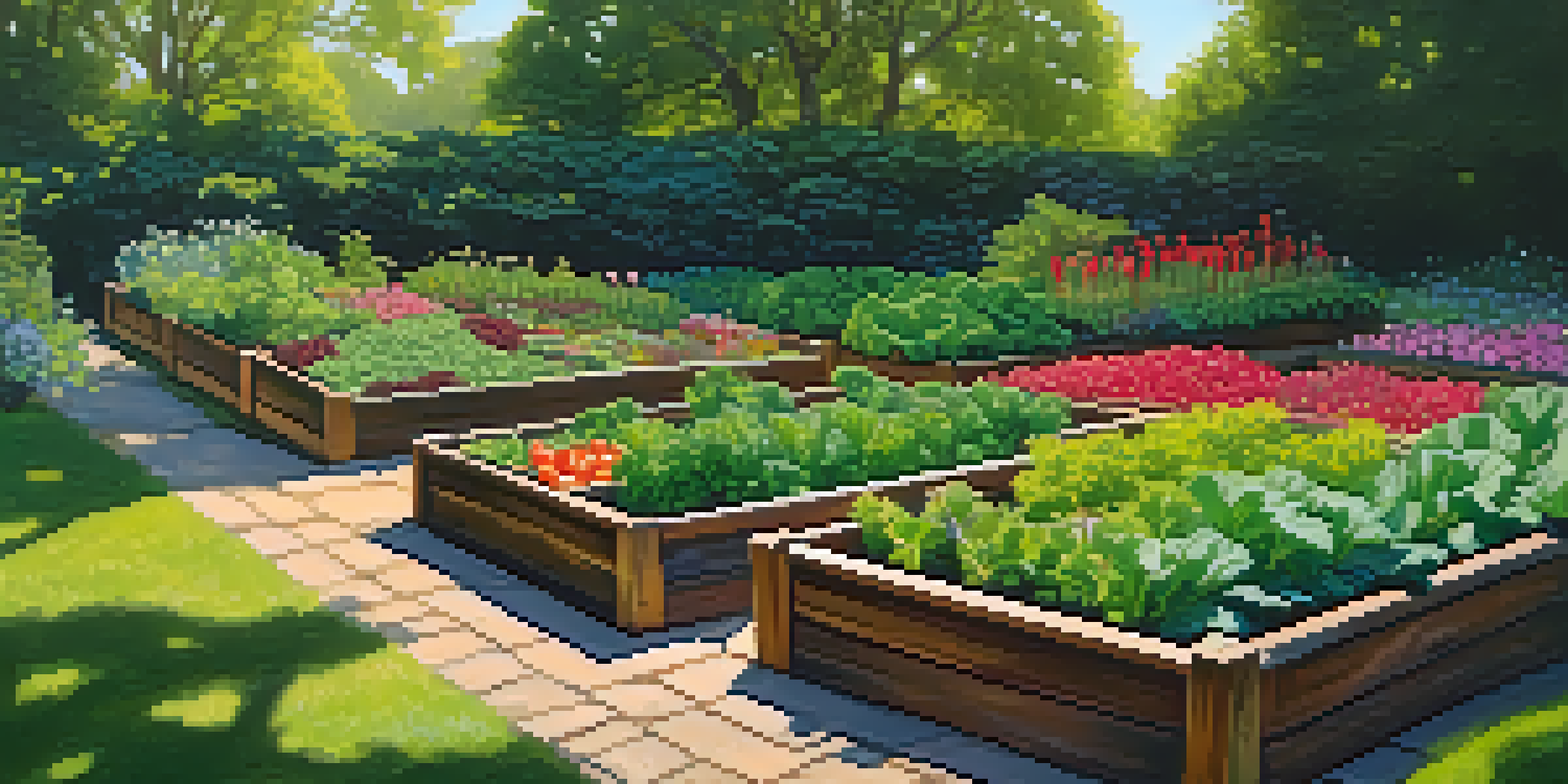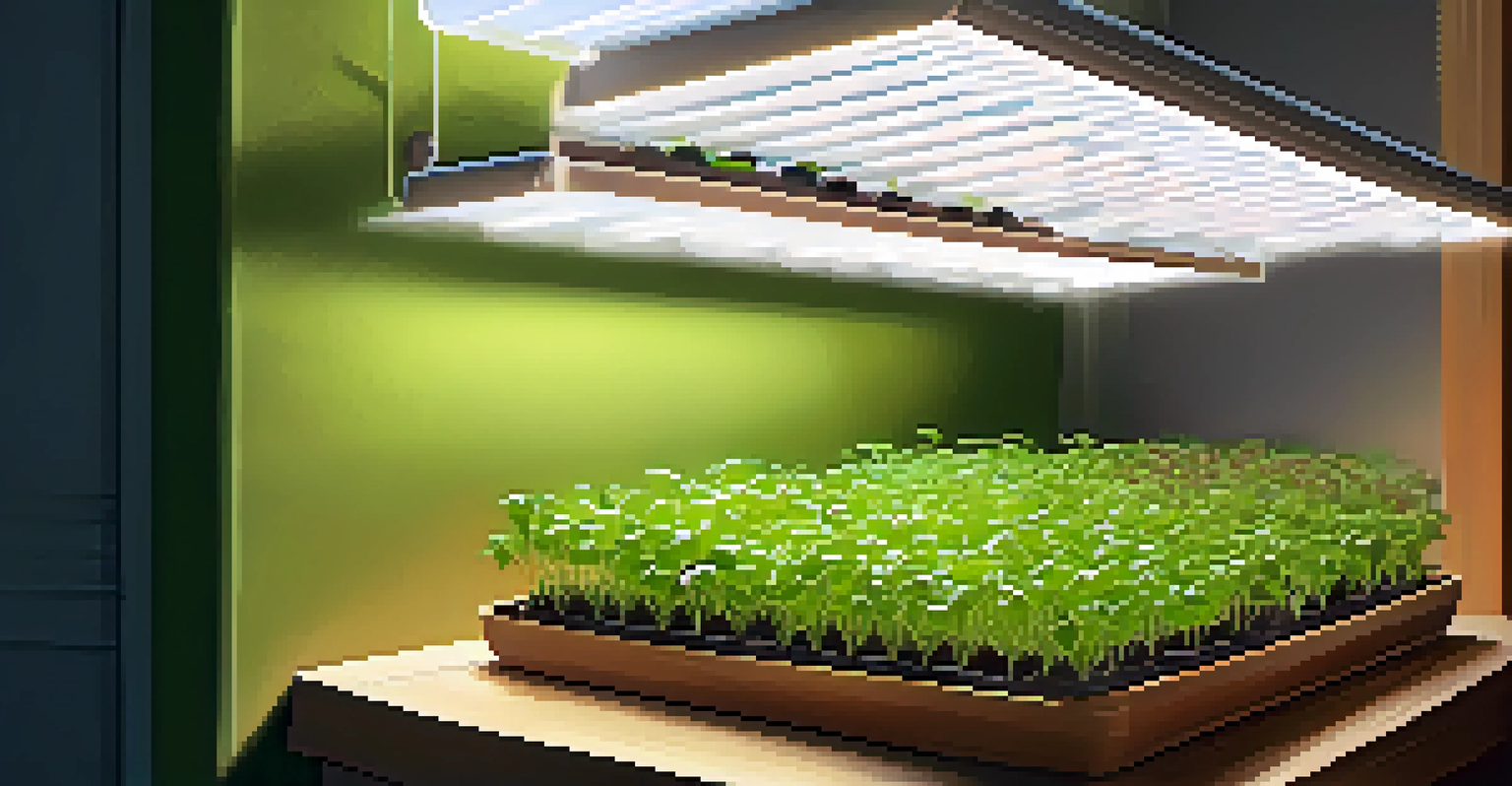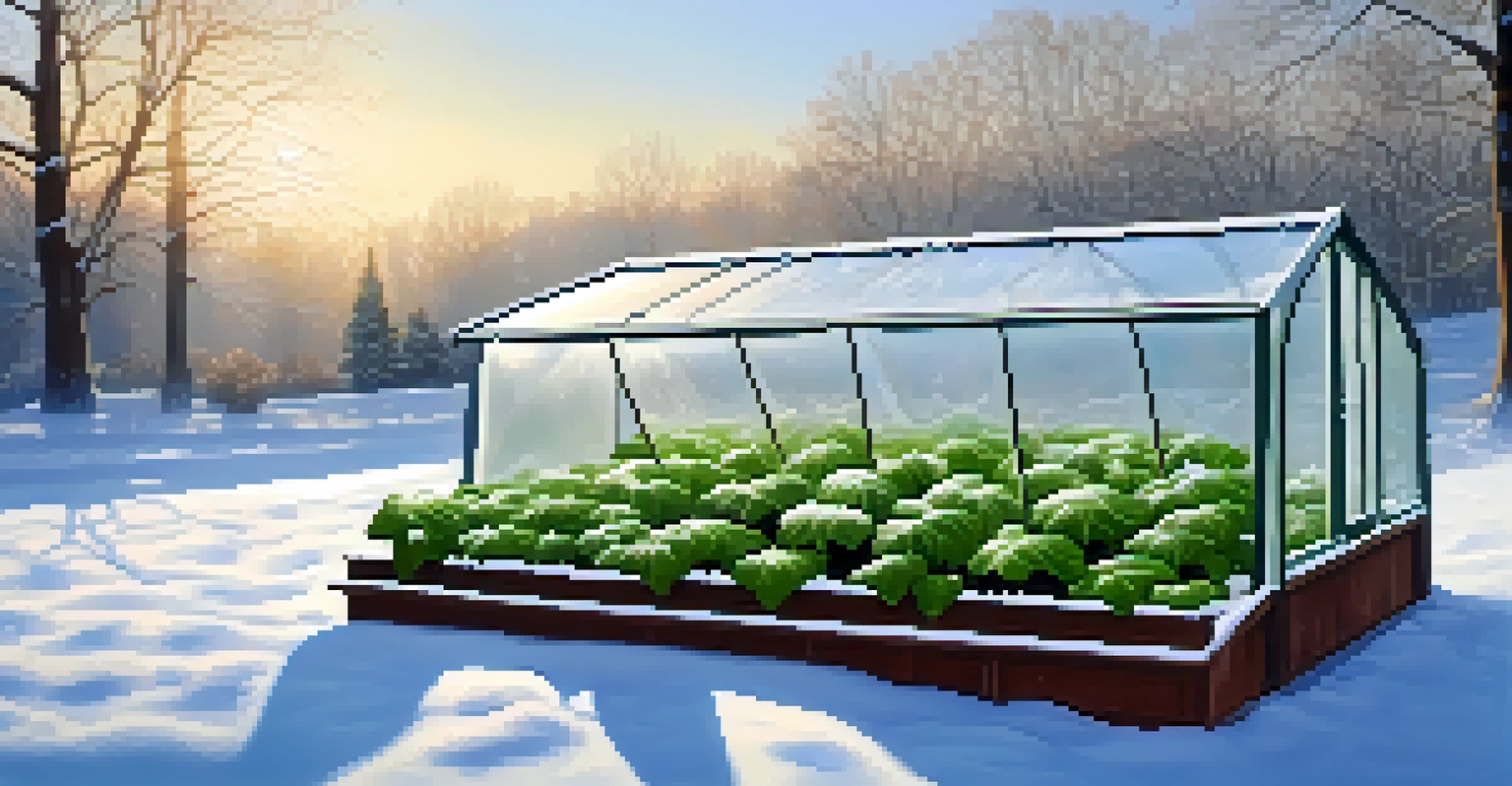Essential Cold Climate Gardening Tips for Short Growing Seasons

Understanding Your Short Growing Season
In cold climates, the growing season can be quite limited, often lasting only a few months. This means careful planning is crucial for successful gardening. Understanding your local frost dates will help you determine when to start seeds indoors and when to transplant them outside.
Gardening is a way of showing that you believe in tomorrow.
For example, if you know your last frost date is in late May, you can start tender plants indoors as early as six to eight weeks prior. This early start will give your plants a head start, allowing them to establish before the colder temperatures set in again. Being aware of both the first and last frost dates can make a huge difference in your garden's success.
Additionally, consider using hardiness zones as a guide, which categorize plants based on their ability to survive in certain temperature ranges. This knowledge will empower you to select the right plants that can thrive in your specific climate.
Choosing the Right Plants for Cold Climates
Selecting the right plants is essential for a thriving garden in a cold climate. Look for varieties that are known to be hardy and can withstand lower temperatures. Cold-hardy vegetables such as kale, carrots, and radishes can be excellent choices for your garden.

Additionally, consider growing native plants that are adapted to your local conditions. They often require less maintenance and are more resilient to pests and diseases. This not only helps your garden flourish but also supports local wildlife and biodiversity.
Plan for Your Short Growing Season
Understanding local frost dates and hardiness zones is essential for successful gardening in cold climates.
Don't forget about perennials! These are plants that come back year after year, making them a great investment for short growing seasons. Examples include rhubarb and asparagus, which can provide harvests season after season if properly cared for.
Utilizing Raised Beds for Better Drainage and Warmth
Raised beds are a fantastic option for cold climate gardening. They warm up faster in the spring than traditional garden beds, allowing you to plant earlier. This is especially beneficial when you have a short growing season, as every extra day can make a difference.
The best time to plant a tree was 20 years ago. The second best time is now.
Moreover, raised beds provide excellent drainage, which is essential for preventing root rot and other issues associated with excess moisture. By elevating your plants, you can create a more controlled environment that can withstand the whims of unpredictable weather.
Consider adding a mix of compost and soil to your raised beds to improve fertility and texture. This not only supports healthy plant growth but also helps retain heat, giving your plants an extra boost during those chilly nights.
Starting Seeds Indoors for an Early Start
One of the best strategies for maximizing your short growing season is to start seeds indoors. This approach allows you to get a jump on the growing season, especially for plants that require a longer maturation time. Using seed trays or biodegradable pots, you can nurture your seedlings until the threat of frost has passed.
Be mindful of the light conditions when starting seeds indoors. Most seedlings thrive with 12-16 hours of light each day, so investing in grow lights can significantly improve your success rate. If you don't have grow lights, placing your seedlings near a sunny window can also work, but rotating them regularly ensures even growth.
Choose Hardy Plants Wisely
Selecting cold-hardy and native plants will enhance your garden's resilience and reduce maintenance.
Once your seedlings are strong enough, gradually acclimate them to outdoor conditions through a process called hardening off. This involves placing them outside for a few hours each day, gradually increasing the time they spend outdoors. This helps reduce transplant shock and prepares them for their new environment.
Implementing Season Extension Techniques
To make the most of your short growing season, consider using season extension techniques. Tools like row covers, cold frames, and greenhouses can help protect your plants from frost and extend your harvest period. These methods create a more favorable microclimate for your plants, allowing them to thrive even in cooler temperatures.
For example, a simple row cover can shield young plants from unexpected frosts while also providing warmth during the day. Similarly, cold frames can serve as mini-greenhouses, allowing you to grow crops even when outdoor temperatures are still quite low.
Another method is to use mulch around your plants. Mulching helps to retain soil heat and moisture, which can be particularly beneficial in the colder months. Plus, it can suppress weeds and reduce the amount of time you spend on maintenance!
Watering Wisely in Cold Weather
Watering plants in cold climates requires a bit of extra care, especially when temperatures start to drop. It's important to ensure that your plants receive adequate moisture without drowning them, as overwatering can lead to root rot. Early morning is typically the best time to water, allowing plants to absorb moisture before the cooler evening temperatures set in.
During particularly cold spells, be mindful of how water freezes in the soil. If the ground is frozen, plants won't be able to take up water, leading to stress. In such cases, consider using methods like deep watering when the temperatures rise slightly, ensuring your plants have enough hydration to survive.
Utilize Soil and Water Strategies
Maintaining healthy soil and being mindful of watering practices are crucial for plant survival in cold conditions.
Additionally, using a rain barrel can be a sustainable way to collect and use water. This not only conserves resources but also provides your plants with naturally soft water, which is often better for them than treated tap water.
Maintaining Soil Health for Robust Growth
Healthy soil is the foundation of any successful garden, especially in cold climates where conditions can be harsh. Regularly adding organic matter, like compost, can significantly improve soil structure and fertility. This enriches the soil with nutrients, providing your plants with the food they need to thrive.
Conducting a soil test can also be beneficial, as it will reveal pH levels and nutrient deficiencies. Knowing the specific needs of your soil allows you to tailor your amendments effectively, ensuring your garden is well-equipped to handle the challenges of a short growing season.

Furthermore, practicing crop rotation and planting cover crops during the off-season can enhance soil health. Cover crops like clover or rye not only prevent erosion but also fix nitrogen into the soil, which is crucial for plant growth. This sustainable approach can lead to healthier plants and better yields over time.